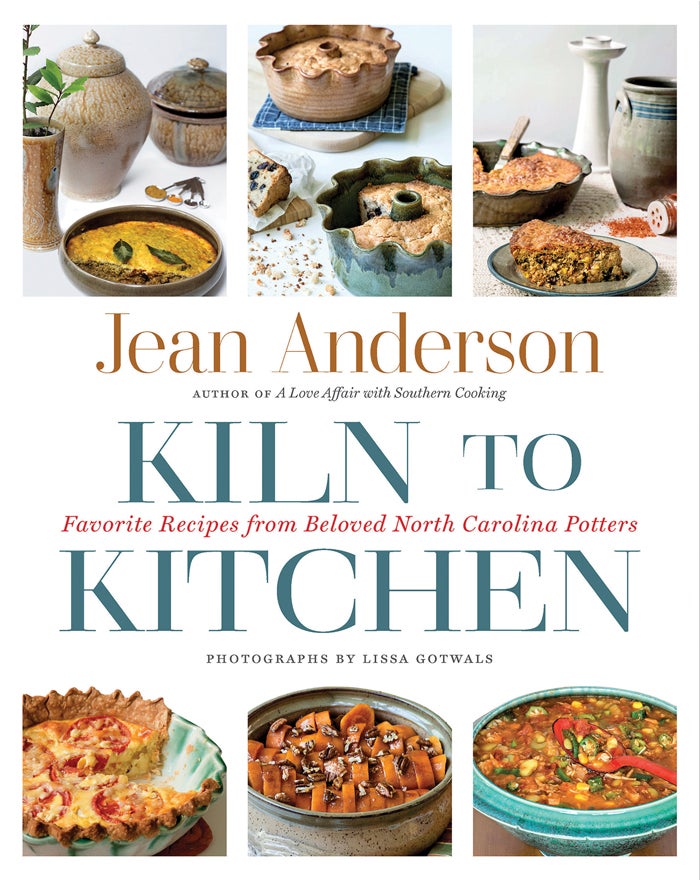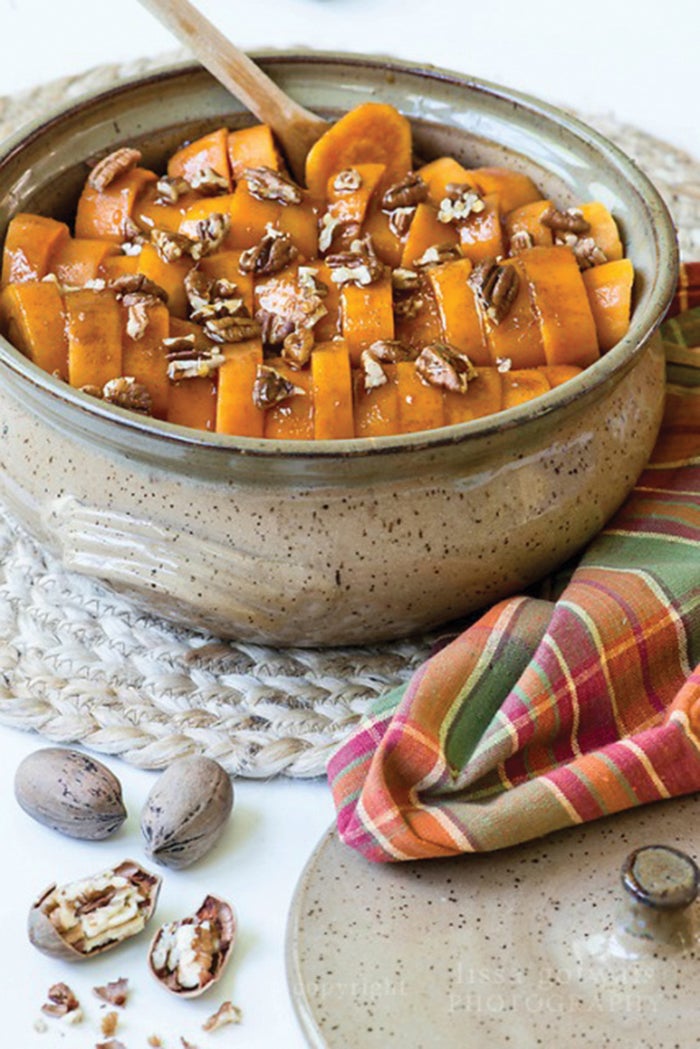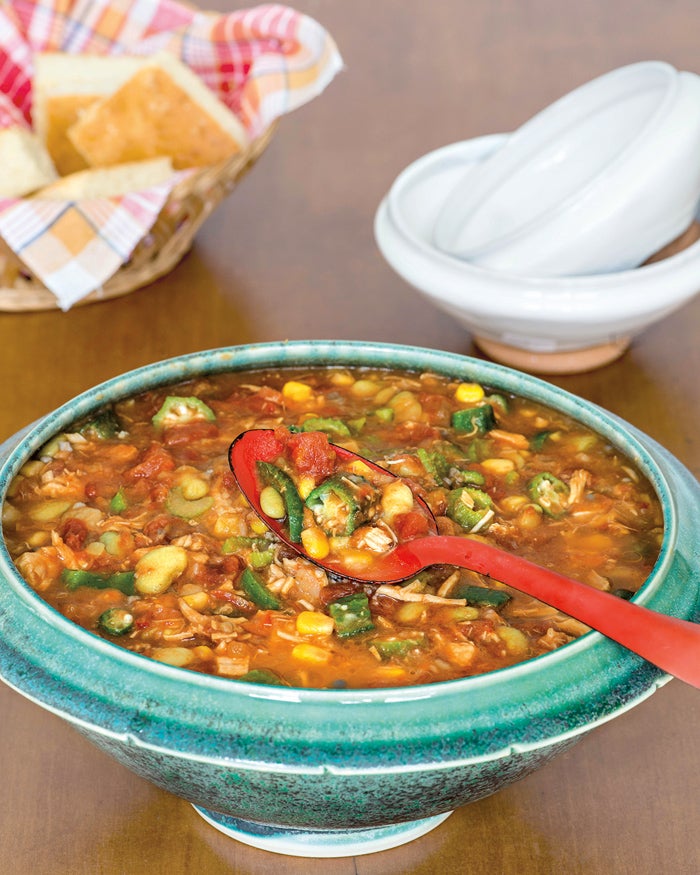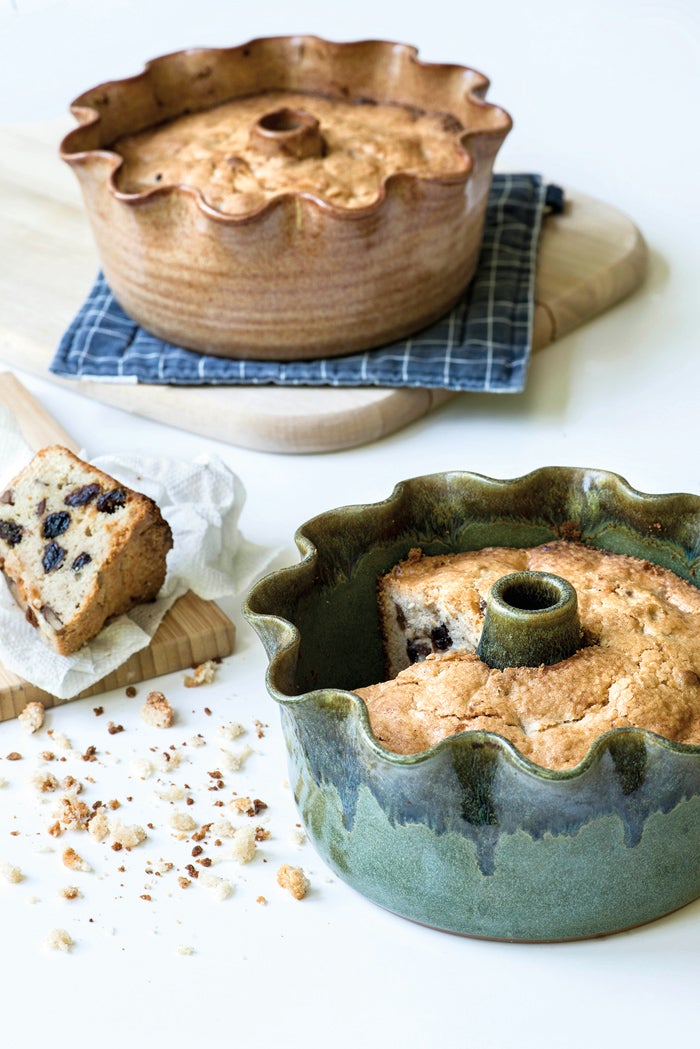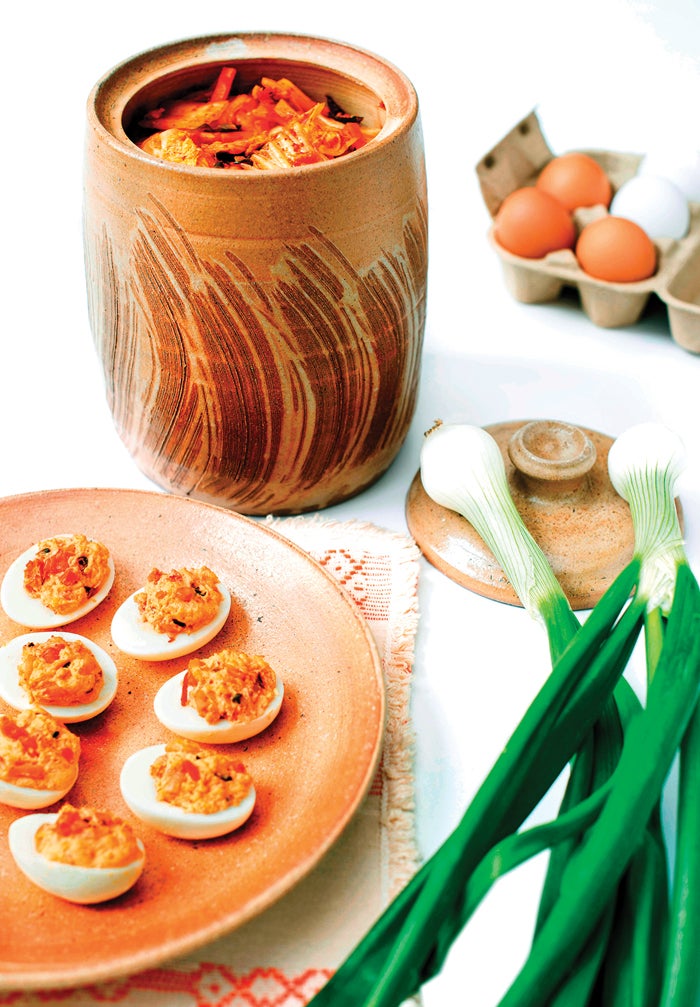Cookbook brings together potters and their works
Published 12:00 am Tuesday, September 10, 2019
Jean Anderson’s new cookbook, “Kiln to Kitchen: Favorite Recipes from Beloved North Carolina Potters,” deliciously brings together two of her lifelong passions — great food and North Carolina pottery. Fans of both will celebrate.
While always meant for one another, pottery and cooking are enjoying a new romance — many potters have introduced designs, glazes and techniques that make pottery more versatile, while others continue making the traditional pie plates, casseroles, jugs and mugs that made this state’s pottery famous.
Potters now routinely tuck recipes into everything from stoneware angel-food cake pans to salt-glazed bean pots, and Anderson has selected a treasury of favorite recipes contributed by the 24 gifted North Carolina potters featured in this book.
Following an introduction to the state’s pottery traditions and general instructions for cooking in clay, Anderson sets off on three tours, pinpointed on maps, that wind through the state’s prime pottery regions — the Greater Triangle, Seagrove and the Catawba Valley/Mountains.
She profiles the featured potters, sharing their backstories and favorite, fully tested recipes. How about trying Ben Owen’s persimmon pudding, Mark Hewitt’s South African beef bobotie or Siglinda Scarpa’s Italian fruit tart, to name just a few of the dishes that span the South and the globe?
Beautiful photographs of 24 recipes in their clay vessels will urge you to dig in.
Anderson, winner of six best-cookbook awards and a member of the James Beard Cookbook Hall of Fame, is the author of more than a dozen cookbooks, most recently “Crisps, Cobblers, Custards & Creams.” After many years working in the New York City publishing world, she came home to North Carolina, bought an old house, and filled it with cookbooks and pottery.
All the recipes below are from “Kiln to Kitchen: Favorite Recipes from Beloved North Carolina Potters” by Jean Anderson. Copyright © 2019 by Jean Anderson. Photographs by Lissa Gotwals. Used by permission of the University of North Carolina Press. www.uncpress.org
Kimchi Deviled Eggs
Makes 6 servings
“My husband, Steven, has an adventurous palate,” Julie Jones says, “and started making kimchi deviled eggs whenever we needed to take an appetizer to share at gatherings. They disappear rapidly because they’re both exotic and delicious.”
Note: Gochujang is a pungent fermented hot red pepper paste or sauce. Look for it at Asian or specialty groceries or order it online. In a pinch, substitute sriracha sauce. My New York friend Maria Harrison Reuge tried this recipe and raved, “Loved, loved, loved these deviled eggs. And what an original recipe!”
Tip: For a creamier filling, add 1 more teaspoon mayonnaise.
Eggs
1 dozen large hard-cooked eggs, shelled (see Tip above)
1/4 cup finely chopped kimchi
3 Tbsp. mayonnaise (see Tip above)
1/2 Tbsp. kimchi liquid
1 Tbsp. gochujang (Korean red pepper paste; see Note above)
1/2 tsp. Asian toasted sesame oil
1/2 tsp. rice vinegar
1/4 tsp. salt, or to taste
1/4 tsp. freshly ground black pepper, or to taste
Garnish
1 medium-size scallion, trimmed and thinly sliced (include green tops), and if you like, cut a second medium-size scallion into thin sticks to cluster on the deviled egg platter
1/4 tsp. black sesame seeds
Halve the hard-cooked eggs lengthwise, pop the yolks into a medium-size nonreactive bowl, and mash well with a fork. Arrange the whites on a large rimmed baking sheet lined with several thicknesses of damp paper toweling and set aside.
Add all the remaining ingredients (kimchi through black pepper) to the mashed yolks and mix thoroughly.
Spoon the yolk mixture into the egg whites, dividing as evenly as possible. Or if you want to get fancy, pipe the yolk mixture through a pastry bag fitted with a plain or fluted No. 10 nozzle, swirling it into a decorative pattern.
Cover the pan of deviled eggs and refrigerate overnight or until ready to serve the next day.
Just before serving, garnish the deviled eggs with sprinklings of thinly sliced scallion and a light scattering of black sesame seeds. Arrange on a large pottery platter (Julie uses one of her own), then if you like, cluster thin scallion sticks in the center of the platter.
Lucille’s Brunswick Stew
Makes 8 to 10 servings
Ben Owen says that on the coldest winter evenings, his grandfather, the Jugtown master potter for whom he is named, “could smell the aroma of this stew floating out to the potter’s wheel. His wife, Lucille, never had to call him — he just knew when the stew was ready.” Also that it would be accompanied by “a big black skillet of hot cornbread.”
Notes: Frozen limas, frozen whole-kernel corn, and frozen sliced okra can be substituted for the fresh. So, too, home canned. Some chickens have giblets, some don’t. No problem. Stew’s delicious with or without.
1 (4-pound) oven-ready chicken (see Notes above)
Chicken giblets, if any, well rinsed
1 quart water (about)
2 tsp. salt, or to taste
1 small chili pequin (dried hot pepper pod)
1 large clove garlic, smashed and skin removed
2 medium-size celery ribs, trimmed and sliced about 1 inch thick
1 medium-size green bell pepper, cored, seeded, quartered, and each quarter thickly sliced
2 large bay leaves, crumbled
2 cups shelled lima beans (see Notes above)
2 cups whole-kernel corn (see Notes above)
2 cups thickly sliced, stemmed small okra (see Notes above)
1 quart tomatoes, preferably home-canned
1/2 tsp. freshly ground black pepper, or to taste
Place the chicken, giblets, if any, water, salt, chili pequin, garlic, celery, bell pepper, and bay leaves in a deep, heavy nonreactive 3 1/2- to 4-quart soup pot, set over moderately high heat, and bring to a simmer.
Adjust the heat so the water barely ripples, cover, and simmer for about 1 hour or until the chicken is fork-tender.
Lift the chicken to a large cutting board, then strain the cooking liquid into a large fine sieve set over a medium-size bowl. Discard the solids in the sieve.
Return the strained broth to the soup pot, add all the remaining ingredients, cover, and bring to a simmer.
Meanwhile, when the chicken is cool enough to handle, tear the meat from the bones in bite-size pieces, and return to the pot.
Cover, and continue simmering for 30 to 40 minutes or until the flavors meld. Note: If at any point the stew seems too thick, add another cup of water or enough to thin the stew to the consistency of chowder. When the stew is done, taste for salt and pepper and adjust as needed.
To serve, ladle the steaming stew into heated pottery soup bowls, and accompany with fresh-baked cornbread.
Cape Fear Sour Cream Coffee Cake
Makes one 6 1/2- to 7-inch Bundt loaf
(6 to 8 servings)
A Cape Fear Pottery favorite created especially for their small pottery Bundt pan. And yes, it’s easy enough to make for a late Sunday breakfast.
1 cup unsifted all-purpose flour
1/2 tsp. ground cinnamon
1/4 tsp. baking powder
1/4 tsp. salt
1/2 cup (1 stick) butter, at room temperature
1 cup sugar
1 large egg
1/2 cup firmly packed sour cream (not low-fat)
1/2 cup golden or dark seedless raisins
1/2 cup coarsely chopped walnuts or pecans
Sift the flour, cinnamon, baking powder, and salt onto a piece of wax paper and reserve.
Using a hand electric mixer at moderately high speed, cream the butter and sugar for about 3 minutes or until fluffy and light, pausing midway to scoop the mixture from the sides and bottom of the bowl. Next, beat in the egg.
By hand, add the sifted dry ingredients alternately with the sour cream, beginning and ending with the dry and working each in to form a stiff batter — 3 additions of the dry ingredients and 2 of sour cream are about right.
Finally, fold in the raisins and walnuts, again working in gently but thoroughly to incorporate.
Line the bottom of a 6 1/2- or 7-inch oven-proof stoneware, other pottery, ceramic, or heat-resistant glass Bundt or tube with a circle of baking parchment or nonstick aluminum foil, then spritz the pan well with nonstick cooking spray, paying particular attention to the central tube and pan sides.
Pack the batter into the pan, smoothing the top and spreading to the edge.
Slide the pan onto the middle shelf of a cold oven, set the thermostat at 350°F, and bake the coffee cake for about 50 to 60 minutes or until lightly browned, springy to the touch, and a cake tester, inserted midway between the rim and central tube, comes out clean.
Transfer the coffee cake to a wire rack, setting it right-side up, and cool in the pan to room temperature. This may take 1 hour or more.
Carefully run a small thin-blade spatula around the edge of the coffee cake and central tube to loosen it, using a poultry pin to free stubborn spots if needed, then invert on a large round plate.
Cut the coffee cake into slim wedges and serve. This coffee cake is delicious on its own and needs no accompaniment other than a cup of coffee or a glass of milk.
Mama’s Sweet Potatoes
Makes 6 to 8 servings
“My mother always made this dish for holiday family gatherings,” says Linda Hilton Long. “It’s quick, easy, and nutritious!” She adds that her mother would buy sweet potatoes when they were on sale, cook up a batch, then peel and freeze them so that she could make this family favorite quickly. What’s unusual about the recipe is that the potatoes are partially cooked, then peeled, cut into medallions, stood on end, and baked in one of the Hilton casseroles.
Tip: Choose sweet potatoes that are 2 to 2 1/2 inches in diameter. If you refrigerate the cooked, peeled sweet potatoes for about 30 minutes, they’ll slice cleanly.
6 large sweet potatoes of uniform size and shape, scrubbed but not peeled (see Tip above)
1/4 cup (1/2 stick) butter
3/4 cup firmly packed dark brown sugar
3/4 cup fresh orange juice
1 Tbsp. medium-brown unsulfured molasses
1/2 tsp. ground cinnamon
1/4 tsp. salt
1 tsp. vanilla extract
1 cup coarsely chopped pecans (optional)
Parboil the sweet potatoes in enough water to cover in a large, heavy pot for 20 to 25 minutes or until not quite tender. Drain well, then slip into a large plastic zipper bag and refrigerate for at least 1/2 hour.
Meanwhile, spritz a 2 1/2 quart ovenproof stoneware, other pottery, ceramic, or heat-resistant casserole with nonstick cooking spray and set aside.
When ready to proceed, melt the butter in a small nonreactive pan over low heat, then mix in the brown sugar, orange juice, molasses, cinnamon, and salt, and cook and stir about 4 minutes or just until the sugar is thoroughly dissolved. Remove from the heat, mix in the vanilla, and set aside.
Meanwhile, peel the chilled sweet potatoes, and cut crosswise into slices about 1/2 inch thick.
Lay the sweet potato end slices flat in the bottom of the prepared casserole, arranging some pointy sides down, others cut-sides down so that they fit together smoothly without overlapping. Now stand the remaining slices on end and in rows on top of the bottom layer, each touching its neighbors so that none will topple. Finally, pour the reserved brown sugar sauce evenly over all.
Set the casserole on a rimmed baking sheet (to catch boilovers), then slide onto the middle shelf of a cold oven, and set the thermostat at 350°F.
Bake the sweet potatoes uncovered for 45 minutes, basting every 20 minutes with the sauce that bubbles up. Note: It’s easier to distribute the sauce evenly if you use a turkey baster.
Add the pecans, if you like, sprinkling evenly over the sweet potatoes, and bake 15 minutes longer or until the potatoes are fork-tender.
Serve at once as an accompaniment to roast turkey, chicken, or pork. Delicious, too, with baked ham.


